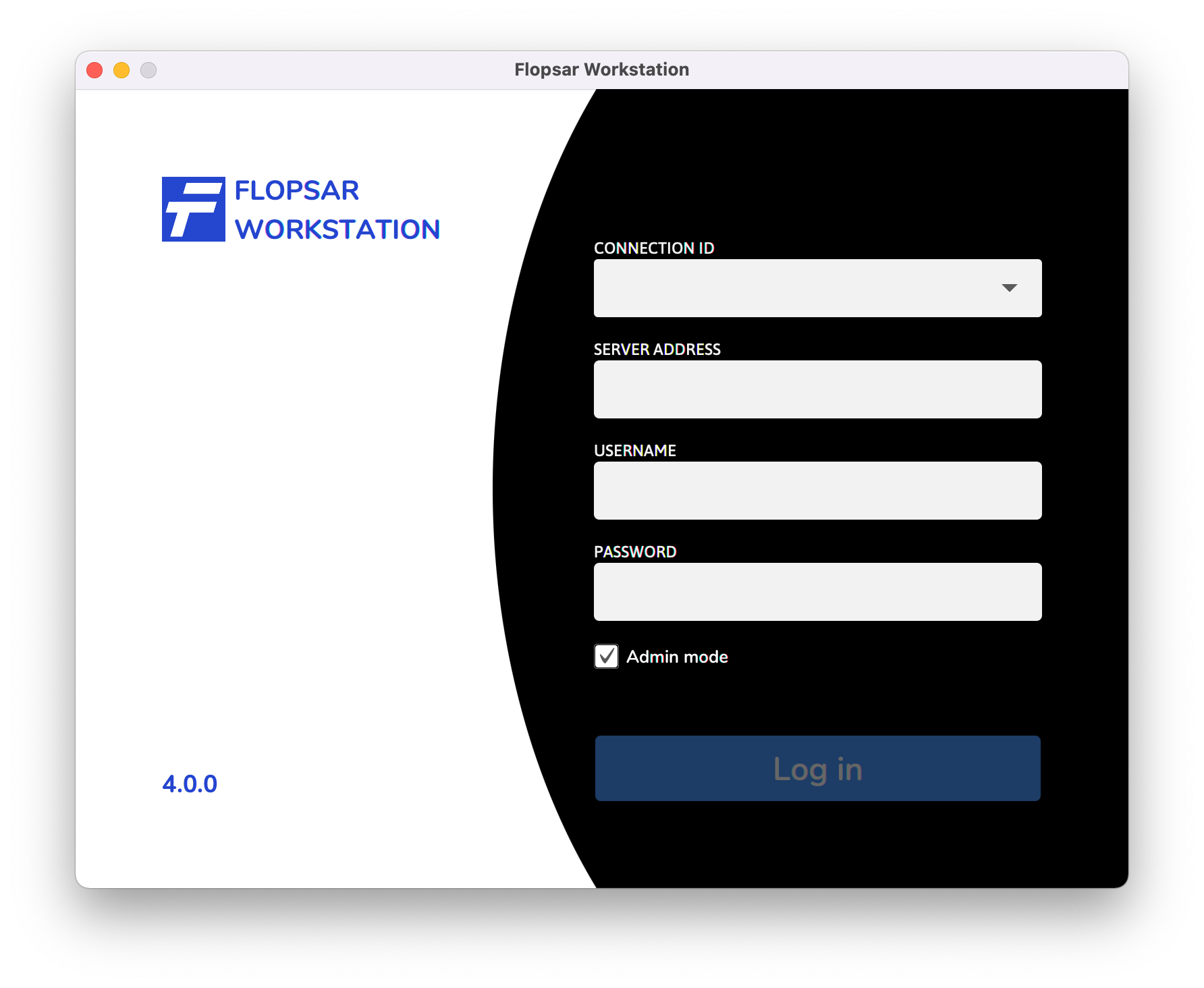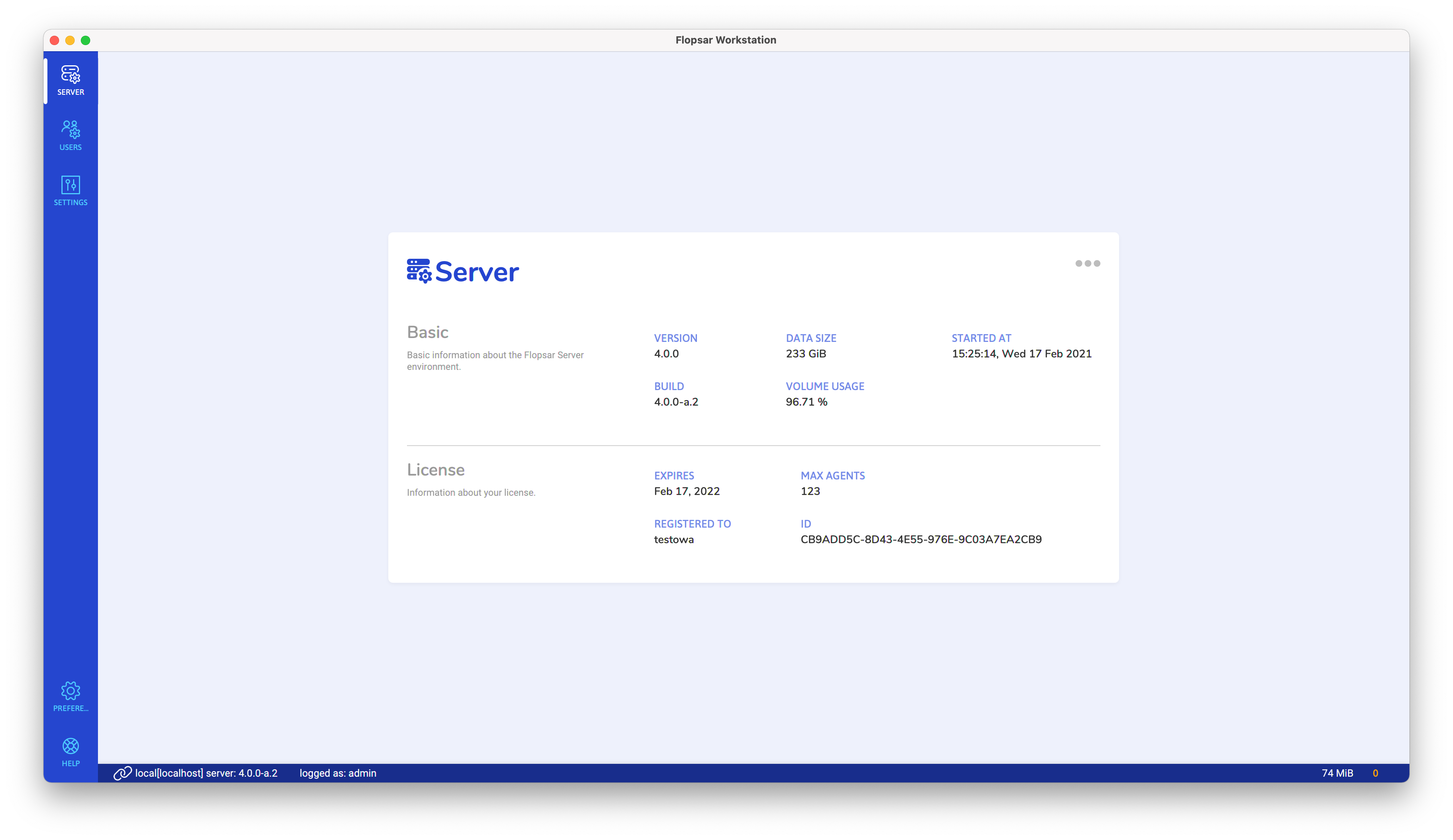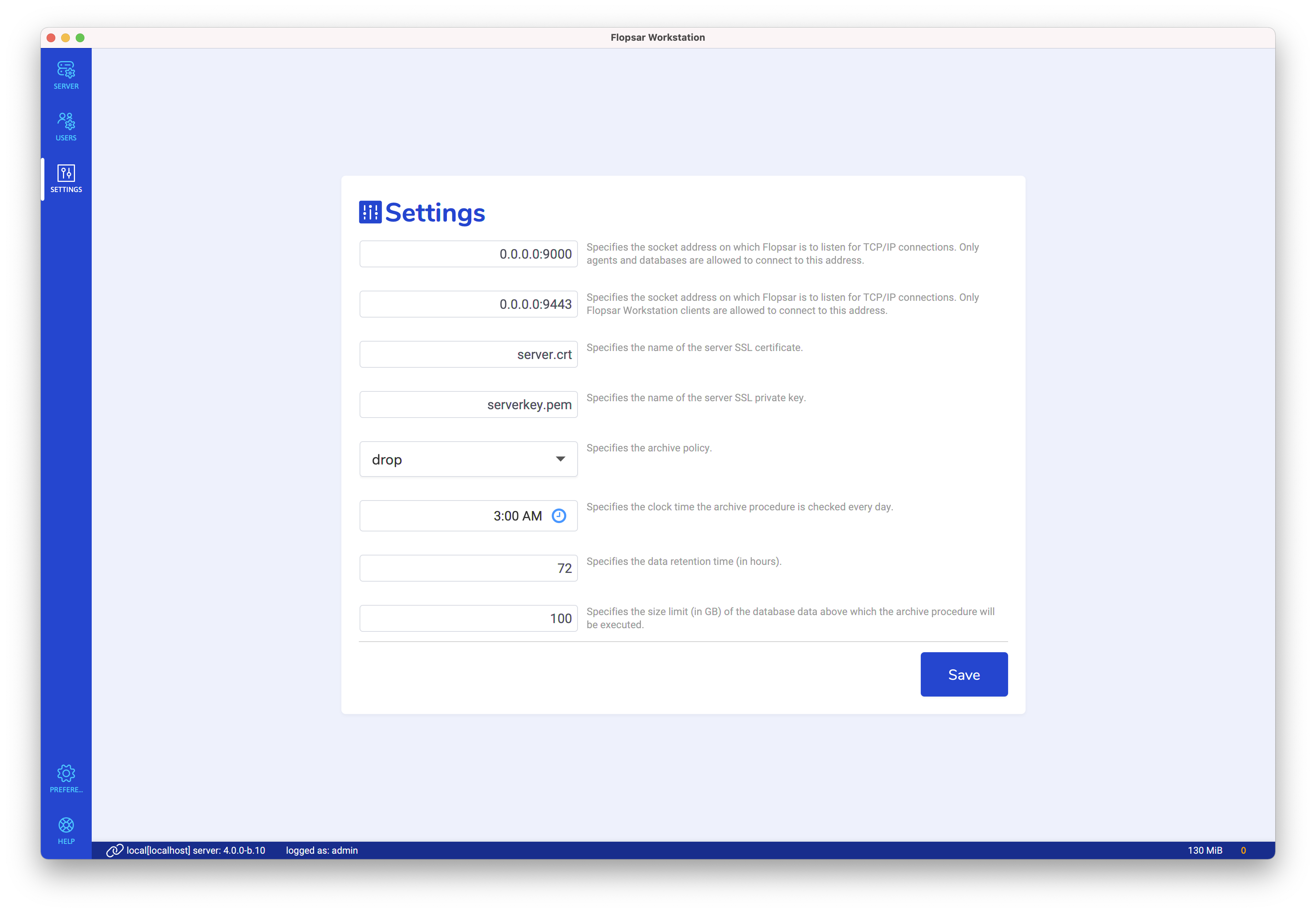Server
Admin Mode
The server is one of the key Flopsar components, which is responsible for managing the entire Flopsar environment. It is managed from the workstation application. You must be logged in admin mode, to manage the server. You need to select the Admin mode option in the login window.

Only users with admin privileges can log in using Admin mode.
When you log in, you will see the server summary view.

This view contains basic information about the server, you are connected to. The information contains:
VERSION
server version
BUILD
server build
DATA SIZE
total size of data stored in the database
VOLUME USAGE
current usage of the volume the database files are stored in
STARTED AT
what time the server started at
Please note, if the volume usage is too high, the server will be shutdown automatically. There must be at least 1GB of free space for the server to run.
The license information covers:
EXPIRES
license expiration date
REGISTERED TO
licensee the license is issued for
MAX AGENTS
maximum number of agents this license allows
ID
license identifier
Server Settings
In this view you can edit the server settings. Any changes will not be effective until the server is restarted.

The following settings are available:
- address at which the server listens for connections from agents,
- address at which the server listens for connections from workstations,
- both the server private key and the certificate (this pair is auto-generated when the server is installed),
- archive settings
Data Archiving
In order to enable the data archiving you need to set the archive policy first. There are three possible choices:
- none: the archiving is disabled,
- drop: the old data will be dropped,
- archive: the old data will be archived.
If the archive policy is not none, than you need to set the time at which the archiving procedure will be checked if it should start or not. There are two conditions that decide if the archive procedure should start. The conditions are: size of the data or the data retention time. If one of the condition is satisfied, then the procedure starts.